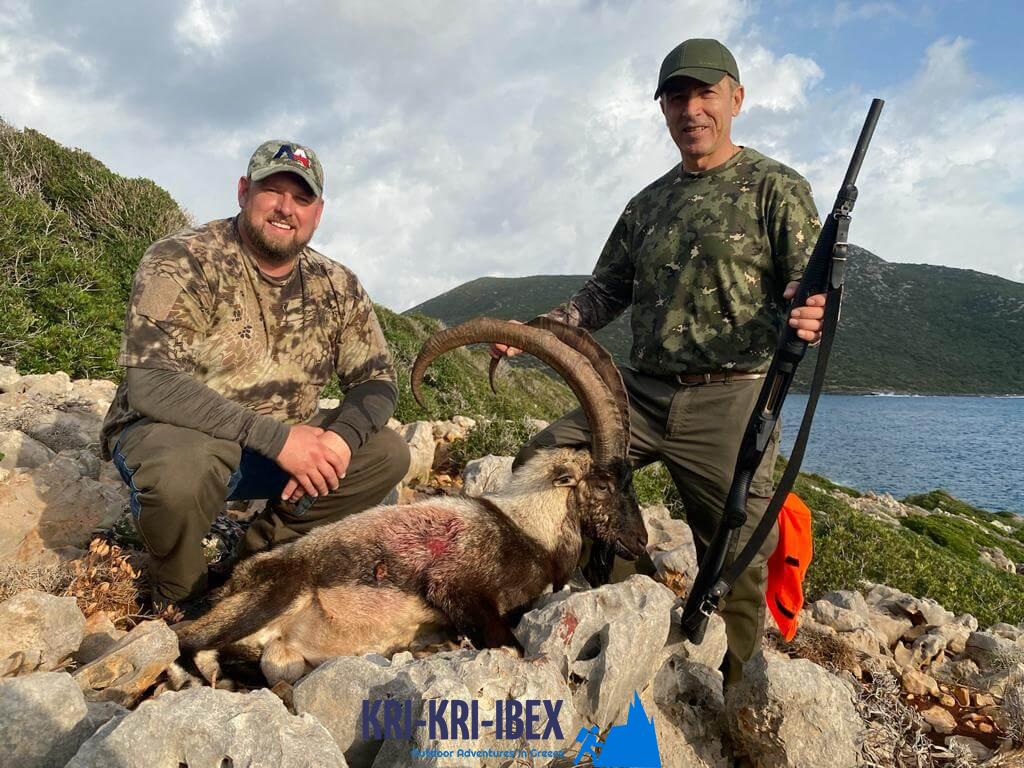Kri-kri ibex searching in Greece
Kri-kri ibex searching in Greece
Blog Article

The Kri Kri ibex hunt in Greece is an extraordinary searching holiday as well as an exciting searching exploration all rolled into one. Hunting for Kri Kri ibex is an unpleasant experience for most of seekers, yet except me! It's an unbelievable hunt for a stunning Kri Kri ibex on an unique island as we tour old Greece, dive to shipwrecks, as well as search throughout five days. What else would you like?

Pursuing the kri kri ibex in Greece is an uphill struggle, specifically if you're a global hunter. You must be a neighborhood hunter in order to search kri kri ibex, which can just be shot in particular carefully secured hunting locations like particular islands. On 2 islands, 150 kilometers/ Atalanty/ as well as 300 kilometers/ Sapientza/ from Athens, we provide the opportunity to hunt this superb animal. It is only shot in special searching locations from morning up until twelve noon, in accordance with Greek regulation. Just shotguns might be used, and also just slugs may be utilized. Slugs are the only ammunition permitted. To guarantee that only serious seekers are enabled on these explorations, you must reserve a year ahead of time for your license. The licenses are released by the Greek Ministry of Nature and Agriculture as well as the federal government issues a certain number annually.
On our Peloponnese tours, you'll get to experience all that this fantastic region has to use. We'll take you on a trip of a few of the most beautiful and also historic sites in all of Greece, consisting of ancient ruins, castles, as well as more. You'll likewise reach experience a few of the standard Greek society firsthand by enjoying several of the tasty food and also wine that the region is recognized for. And also obviously, no trip to Peloponnese would be total without a dip in the sparkling Mediterranean Sea! Whether you're a seasoned hunter seeking a new journey or a new vacationer simply aiming to check out Greece's magnificent landscape, our Peloponnese trips are perfect for you. What are you waiting for? Book your journey today!
Look no further than the Sapientza island in Greece if you are looking for Kri Kri ibex hunt and also memorable vacation location. With its magnificent all-natural appeal, tasty food, and also abundant society, you will certainly not be let down. Reserve among our hunting as well as touring Peloponnese Tours from Methoni today, dot neglect your trophy Kri Kri ibex!
What is the diference between Kri Kri ibex, Bezoar ibex and hybrid ibex
The kri-kri is not thought to be indigenous to Crete, most likely having been imported to the island during the time of the Minoan civilization. Nevertheless, it is found nowhere else and is therefore endemic to Crete. It was common throughout the Aegean but the peaks of the 8,000 ft (2,400 m) White Mountains of Western Crete are their last strongholds–particularly a series of almost vertical 3,000 ft (900 m) cliffs called ‘the Untrodden’—at the head of the Samaria Gorge. This mountain range, which hosts another 14 endemic animal species, is protected as a UNESCO Biosphere Reserve. In total, their range extends to the White Mountains, the Samaria National Forest and the islets of Dia, Thodorou, and Agii Pandes.
This Ibex is NOT a diminutive form of the Bezoar Ibex, which has migrated into the western-most reach of the range of this species. The kri – kri (Capra aegagrus cretica), sometimes called the Cretan goat, Agrimi, or Cretan Ibex, is a feral goat inhabiting the Eastern Mediterranean, previously considered a subspecies of wild goat. The kri-kri has a light brownish coat with a darker band around its neck. It has two horns that sweep back from the head. In the wild they are shy and avoid tourists, resting during the day. The animal can leap some distance or climb seemingly sheer cliffs.
“The agrimi goat Capra aegagrus cretica is unique to Crete and its offshore islands. It has been identi®ed as a sub-species of the wild bezoar goat Capra aegagrus aegagrus Erxleben, 1777, which it closely resembles in horn shape, body form and coloration. This classi®cation has been disputed by some researchers who claim that the agrimi are feral goats, derived from early domestic stock brought to the island by the ®rst Neolithic settlers. In order to clarify this issue, DNA analyses (cytochrome b and D loop sequences) were carried out on tissue of live and skeletonized agrimi and compared to sequences of wild and domestic caprines. Results conclusively show the agrimi to be a feral animal, that clades with domestic goats (Capra hircus) rather than with wild Asiatic bezoar. This study demonstrates that morphometric criteria do not necessarily re¯ect genetic af®nities, and that the taxonomic classi®cation of agrimi should be revised.”
Report this page